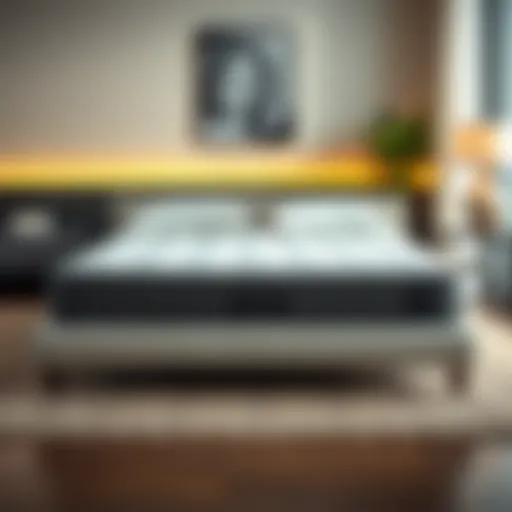Exploring the Realism of Faux Plants in Interiors
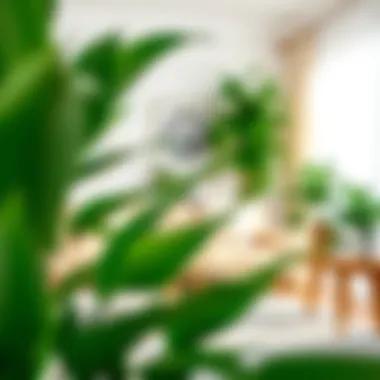

Intro
Faux plants have increasingly found their way into homes, offices, and social venues, captivating the hearts of many. In today’s world, where nature often feels like a scarce commodity, these lifelike alternatives to real greenery offer a refreshing touch of the outdoors. However, it’s essential to dive deeper into their authenticity and aesthetic appeal to understand their place in modern design.
The allure of faux foliage lies not only in their ability to mimic the visual charm of real plants but also in their unwavering endurance. With advancements in technology, the materials used to create them have advanced tremendously, allowing designers to craft pieces so realistic that it’s a challenge to discern them from the genuine articles. By investigating how these synthetic plants contribute to decorative schemes and lifestyle choices, we unwrap the potential they have beyond mere ornamentation.
The aim is to navigate through various aspects of these plants, from current furniture design trends to practical buying guides. The influence of color palettes, styles, and materials plays a crucial role in determining how effectively faux plants can enhance an interior space while keeping environmental considerations in mind.
In the forthcoming sections, we’ll explore how these items blend seamlessly into a modern setting, highlighting their contributions to both aesthetics and functional design. The journey will involve dissecting the complexities that come with choosing the right faux plant for specific needs, whether that’s enhancing your home, office, or even public spaces. Let’s dig in.
Intro to Faux Plants
In a world where natural elements are often seen as essential for aesthetics and well-being, faux plants are forging a unique path. Their importance in interior design cannot be overstated; they offer a solution that many homeowners and designers are turning to in search of beauty without the burden of upkeep. Faux plants have transformed from mere decorative items into symbols of practicality and sustainability, allowing individuals to enhance their spaces without sacrificing time or resources.
Understanding Faux Plants
Faux plants, often crafted from an array of synthetic materials such as plastic and silk, replicate the vibrant colors and intricate details of real plants. The allure of these artificial creations lies not only in their appearance but also in their ability to serve various purposes in home and office environments. One might opine that faux plants are akin to the modern-day equivalent of the art of illusion – they bring the liveliness of nature indoors without the need for sunlight, water, or constant care.
Homeowners appreciate the versatility of faux plants. Whether it’s a sleek, minimalist design or a bohemian vibe, these plants can adapt to any interior style. Designers find these products particularly appealing because they are devoid of the seasonal restrictions that come with live plants. An evergreen tableau can reside in the calm of winter or the warmth of summer, offering continuous sensory delight.
Perhaps one of the most compelling attributes of faux plants is their allergy-friendly nature. For those who suffer from allergies, having greenery that doesn't produce pollen or require excessive humidity allows for a more comfortable living environment. Moreover, faux plants do not harbor pests, making them a hassle-free choice for families with small children or pets.
The Evolution of Artificial Foliage
The journey of artificial foliage is as intriguing as the plants themselves. Initially, faux plants garnered a bad rap for their unrealistic appearance, often lacking texture and depth. However, advances in technology have brought an evolution in their design and authenticity. Early faux plants resembled, at best, a poor imitation of their live counterparts but now rival them in terms of detail and realism.
Today’s innovations in production techniques have enabled manufacturers to create plants that not only look real but also feel real. The use of advanced pigments allows for a spectrum of colors found in nature, while texturing techniques simulate the tactile surfaces of leaves and petals. As a result, the modern faux plant can surprise seasoned decorators with its ability to mimic the subtleties of authenticity.
"Faux plants have come a long way, evolving from simple decor to intricate pieces that bring lifelike beauty into our daily environments."
This evolution also includes a shift in consumer perception. No longer just seen as cheap alternatives, faux plants have established a niche for themselves in eco-conscious design, prompting discussions around sustainability and responsibility. With growing awareness of environmental issues, the demand for faux foliage positions them as not just aesthetic choices but also as thoughtful, long-lasting solutions in decorating homes and workplaces.
In summary, faux plants are not merely decorations; they are a testament to design innovation and a reflection of modern sensibilities regarding life, aesthetics, and sustainability. Their role in our living spaces underscores the blend of practicality with visual appeal.
Materials Used in Faux Plants
When discussing faux plants, one cannot overlook the significance of the materials used in their creation. The authenticity and visual appeal of these artificial botanicals directly hinge on the quality of the materials. In a world where design and aesthetics are paramount, understanding the components involved in crafting faux plants can profoundly impact a consumer’s choice.
Common Materials and Their Properties
Faux plants are often made from a variety of materials, each chosen for specific properties that contribute to the realism and durability of the final product. The most common materials include:
- Plastic: This is perhaps the most widely used material in the production of faux plants. It is lightweight, inexpensive, and can be molded into a myriad shapes. However, not all plastics are created equal. Higher quality plastics are more UV-resistant, which means they can maintain their color when exposed to sunlight over time.
- Silk: Silk faux plants are known for their exquisite detail and natural feel. Unlike plastic, silk can mimic the texture and subtle variations found in real foliage without appearing overly glossy or artificial. However, they do require a wee bit more maintenance compared to plastic versions, as they can attract dust more easily.
- Polyester: Similar to silk, but typically more durable and easier to clean. Polyester has also become a favorite among manufacturers due to its ability to retain vibrant colors for long periods. Many faux plants combine polyester with other materials to enhance their overall realism.
- Foam: Sometimes used for larger plants or flowers, foam allows for lightweight designs that can still maintain structural integrity. Foam faux plants are often coated with a layer of paint or another material to add color and texture, making them a valuable member of a designer’s toolkit.
Each of these materials comes with its own set of pros and cons, which is why understanding their properties can assist homeowners, designers, and DIY enthusiasts alike in making educated decisions when selecting faux plants for their spaces.
Technological Advancements in Material Design
The realm of faux plant design has undergone significant changes due to advancements in technology. In the past, creating a lifelike artificial plant may have been an arduous task involving limited choices and simple designs. Fast forward to today, and the landscape is much different.
- 3D Printing: This innovative technology has opened the doors to complexities in design unimaginable just a few years ago. Manufacturers can now create intricate details that were once only achievable through labor-intensive methods. With precise dimensions, even the smallest leaf veins can be replicated, offering a striking resemblance to real plants.
- UV-Resistance: Improved formulations in plastics and coatings have led to the creation of faux plants that resist fading even when placed in direct sunlight. This is a vital feature for those looking to use faux plants in areas such as patios or sunrooms, where traditional indoor plants might struggle to survive.
- Eco-Friendly Materials: There's a growing trend toward sustainability in manufacturing, and faux plants are no exception. New materials are being developed that not only provide a natural look but are environmentally friendly. For instance, bio-based plastics derived from renewable resources are emerging, reducing the ecological footprint of faux plant production.
As technology progresses, one can expect continued evolution in material design, leading to even more realistic, durable, and eco-conscious options for faux greenery enthusiasts. The market is teeming with possibilities that reflect both aesthetic desires and ethical considerations.

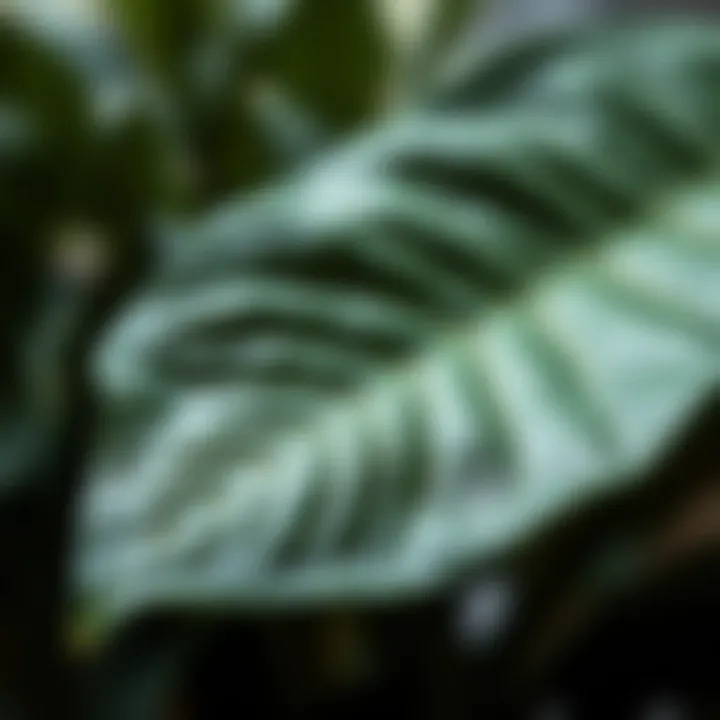
Designing with Faux Plants
When it comes to creating visually appealing spaces, designing with faux plants proves to be an integral aspect in interior decoration. Faux plants not only provide aesthetic pleasure but also offer versatility in various design schemes. Their ability to imitate natural greenery allows design enthusiasts to enhance their environments without the constraints of maintenance that real plants demand. With faux plants, individuals can curate an atmosphere that reflects their personality without worrying about the health or upkeep of living greenery.
Styles and Trends in Faux Plants
Faux plants have come a long way since their rudimentary beginnings, evolving into highly realistic decor items that cater to different stylistic tastes. Currently, there’s a diverse array of styles to choose from, appealing to various preferences.
- Minimalism: The minimalist trend favors simplicity, and faux plants fit neatly into this mold. Clean lines and understated elegance are often highlighted by delicate faux greenery that requires no fuss.
- Bohemian: A bohemian aesthetic often embraces abundance through layering. Here, faux plants can add a touch of exotic flair without the fear of wilting. Large palm fronds or hanging ivy can create inviting nooks without the struggle of plant care.
- Industrial: The industrial styling, with its raw materials and urban edge, can be softened with chunky faux succulents in concrete planters. This juxtaposition adds depth to the design without overwhelming it.
Current trends also showcase faux plants with bold textures and vibrant colors, stepping away from traditional greens to embrace more experimental hues. This adaptability makes them an ever-popular choice among designers.
Incorporating Faux Plants into Various Spaces
Faux plants are not just for aesthetic appeal; they can be strategically placed in key rooms within a home to enhance the overall vibe. Each space offers its unique traits for integrating these decorative elements effectively.
Living Rooms
The living room often serves as the heart of a home. It's where family and friends gather, making it a prime candidate for incorporating faux plants. Large statement pieces, such as faux fiddle leaf figs or snake plants, can act as focal points, drawing the eye and adding a splash of color.
- Key Characteristic: Living rooms typically blend comfort with style, creating a warm atmosphere that can be effortlessly accentuated with greenery.
- Benefit: Faux plants require no sunlight, making them ideal for rooms with limited natural light.
- Unique Feature: Their variance in size allows for customizing the space, whether placed in a corner for height or used on shelves for visual interest.
Kitchens
Kitchens have also embraced the trend of faux plants. From counter-top succulents to hanging herbs (that need no actual watering), these plants can introduce life into what is often seen as a stark environment.
- Key Characteristic: Brightness and freshness are crucial in kitchens, as they can influence mood and appetite.
- Benefit: Faux plants are an ideal solution for areas prone to humidity (like near stoves or sinks) where real plants may struggle.
- Unique Feature: Their ease of maintenance just adds to their appeal, providing visual delight without hassle.
Bathrooms
The tranquil atmosphere of a bathroom can elevate with the right faux plants. While real plants may struggle with the high humidity, faux alternatives can thrive without special care.
- Key Characteristic: Bathrooms tend to be smaller and often require elements that balance utility with aesthetics.
- Benefit: Faux plants can fit into tight spaces, such as shelves or window ledges, adding a spa-like feeling with minimal effort.
- Unique Feature: They can both brighten a sterile space and absorb sound, creating a peaceful sanctuary.
The Aesthetic Benefits of Faux Plants
Faux plants have gained popularity for their ability to enhance the aesthetics of any space without the burdens associated with live plants. In today’s design landscape, where versatility and practicality matter, the aesthetic benefits of these artificial botanicals are hard to overlook. They offer a unique way to bring a sense of life and color into environments that might otherwise feel sterile or lifeless.
Understanding the artistic appeal of faux plants is vital, as it encompasses various elements, from texture to color vibrancy. These aspects play a crucial role in creating visually appealing and harmonious interiors. One can easily find faux plants that fit into modern homes, rustic spaces, or even eclectic environments.
Beyond just beauty, faux plants allow designers and homeowners to experiment creatively. They break traditional barriers by enabling a blend of colors and textures that not only complement but also enhance existing decor. Hence, faux plants are not just mere substitutes; they represent a sophisticated choice in decorative elements.
Creating a Lush Environment
Faux plants are particularly effective for those seeking to create lush environments that promote tranquility and serenity. Unlike real plants that require specific care and can only thrive in suitable conditions, faux plants provide the lushness without the upkeep. For example, a beautifully arranged artificial Fiddle Leaf Fig can instantly transform a dull corner into a vibrant green sanctuary.
Imagine being able to place a palm in a well-lit bathroom or a fern in a dimly lit hallway without worrying about watering schedules or humidity levels. Herein lies one of the significant advantages: faux plants define a space's character and engage the senses.
Key Points to Consider:
- Versatility: Faux plants can adapt to any interior style—be it minimalistic, industrial, or bohemian.
- Zero Maintenance: The absence of care regimes allows people to enjoy greenery without the stress of plant care.
- Imagine: With faux plants, even those with a less-than-green thumb can achieve a verdant look.
Color and Texture Variations
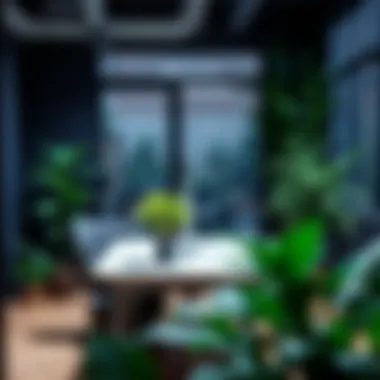
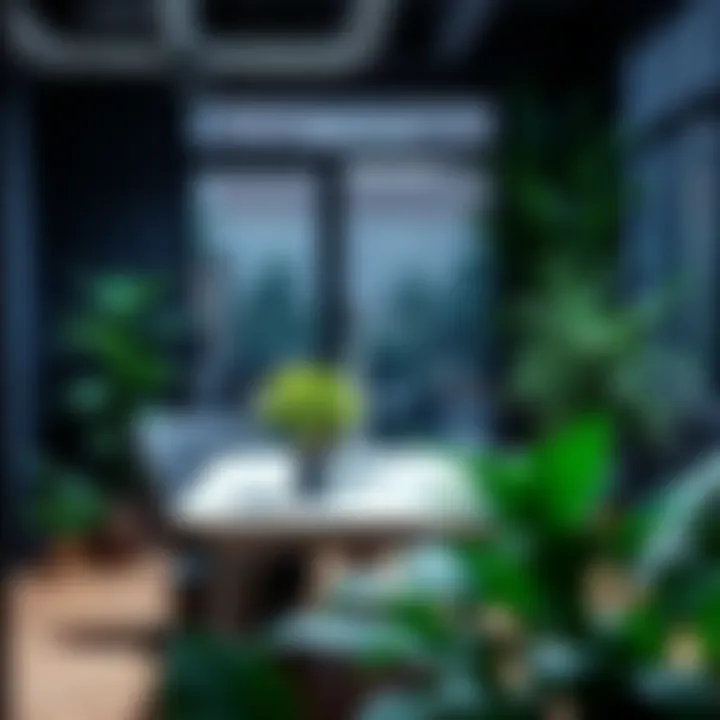
Another distinct appeal of faux plants is their variety in color and texture. Unlike real plants, which might present limitations in terms of seasonal changes, artificial foliage offers an endless palette. Designers have the option to choose from an array of vibrant hues that can be tailored to fit any room's color scheme.
Beyond just shades, the texture variations available in faux plants can add dimension to interiors. For instance, a plush, fabric-casted succulent can contrast beautifully with the sleek lines of a ceramic pot, adding depth to the space. A mix of silk leaves and plastic vines can be combined for a more tactile experience.
Color and Texture Highlights:
- Diverse Range: Faux plants can present colors not typically found in nature. For instance, deep burgundy or dusty blue succulents.
- Lifelike Textures: Many brands focus on replicating the feel of real leaves, combining materials for a rich textural experience.
- Seasonal Adjustability: Feel free to swap colors or styles to match seasonal trends or festive occasions without any hassle.
"Incorporating faux plants into your environment celebrates personal style while ensuring ease of maintenance and longevity."
In summary, introducing faux plants into a space provides not only aesthetic enhancements but also functional benefits. It allows for creative expressions while ensuring reliability in upkeep. The detailed attention to color and texture intricacies gives a fresh outlook on interior design without compromising the vision of lush greenery.
Practical Considerations
In evaluating the role of faux plants within modern interior design, practical considerations are often overshadowed by their aesthetic appeal. However, these considerations are not merely afterthoughts; they play a crucial role in how effectively faux plants can enhance one's living space. Homeowners and designers alike should recognize the significance of maintenance, care, and longevity associated with these decorative items. Unlike real plants, which require constant attention and sometimes shallow roots in practicality, faux plants offer a more flexible option for those wanting greenery without the fuss.
Maintenance and Care of Faux Plants
When it comes to faux plants, maintenance is substantially simpler compared to their living counterparts. Generally, these plants require just a light dusting or an occasional wipe with a damp cloth to keep them looking fresh. This aspect is a boon for busy homeowners or those who may lack a green thumb.
Here are a few tips on maintaining faux plants:
- Dust Regularly: Faux plants can collect dust, so it’s smart to use a microfiber cloth weekly. A quick dusting keeps them vibrant.
- Avoid Direct Sunlight: While faux plants will not wilt like real ones under the sun, prolonged exposure can fade their colors. Placing them in a spot with indirect light extends their life.
- Clean Residues Promptly: If any food or liquid spills on your faux plant, clean it right away with mild soap and water. This helps free them from unwanted stains.
Those who embrace the beauty of faux plants can appreciate that they ask for very little. This has become increasingly attractive to individuals looking to create a lush interior without the ongoing complexities of real plant care.
Lifespan and Durability Compared to Real Plants
One of the most compelling arguments for choosing faux plants is their durability. Real plants naturally have a limited lifespan, constrained by care, environment, and health conditions. In contrast, high-quality faux plants can last years, if not decades, often looking as good as new with minimal care throughout their lifetime. This quality means that homeowners are not forced to replace plants due to inclination or unfortunate demise.
Consider these points regarding their longevity:
- Material Quality: Sourced well, materials such as silk or polyethylene can endure wear and tear.
- Weather Resistance: Some faux plants are designed for outdoor use; they resist moisture and UV rays, maintaining their form and color.
- Less Waste: By opting for faux plants, you aren't contributing to the cycle of plant death and waste creation – these designs create a greener environment without compromising on popularity.
"A well-placed faux plant can provide that splash of life to a room while delivering the promise of an everlasting presence."
In essence, understanding these practical considerations equips homeowners and designers with the knowledge necessary to make informed choices. Faux plants offer promising possibilities that cater to a busy lifestyle without sacrificing elegance.
Faux Plants and Environmental Impact
The conversation around faux plants often steers towards aesthetics and convenience. However, to overlook their environmental impact would be both short-sighted and simplistic. This section endeavors to unpack the nuanced implications of choosing faux over real plants, particularly in a society increasingly aware of its ecological footprint. Focusing on sustainability, resource utilization, and the role faux plants play in our indoor environments, we can better appreciate their place in contemporary decor.
Sustainability Concerns
The question of sustainability in faux plants is layered. To begin with, a criticism often launched at faux plants is that they contribute to plastic waste, especially when they are crafted from non-biodegradable materials. Polyester, polyvinyl chloride (PVC), and other synthetic materials dominate the market. Homemade or local options may utilize more sustainable practices, which makes it essential to choose wisely.
That said, there are elements that can actually favor faux over live plants. Manufacturing faux plants typically requires fewer resources over time than raising live plants. Growing and maintaining real plants may involve pesticides, fertilizers, and significant water consumption. A faux plant doesn’t require weekly watering or monthly soil changes, offering water conservation benefits. Furthermore, the longevity of faux plants can also outweigh one-time purchases of living plants, making them a potentially more sustainable choice in terms of lifespan.
Moreover, as technology improves, some faux plants are being made with recycled materials, aiming to address earlier sustainability concerns. By harnessing materials that would otherwise end up in landfills, manufacturers are beginning to present a balance between aesthetics and ecological responsibility. This brings some good news for eco-conscious consumers.
Role of Faux Plants in Eco-Friendly Decor
In an age of conscientious design, faux plants carve a niche that complements eco-friendly living. Interior decor that proudly incorporates faux plants can reflect a commitment to style while also reducing environmental strain. Here are a few ways faux plants can contribute to more sustainable interior design:
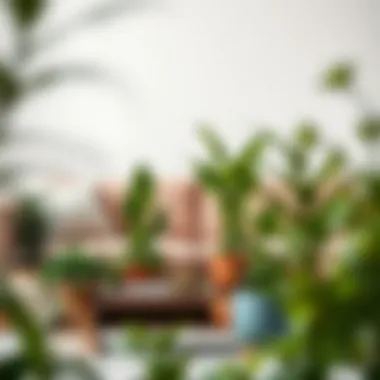
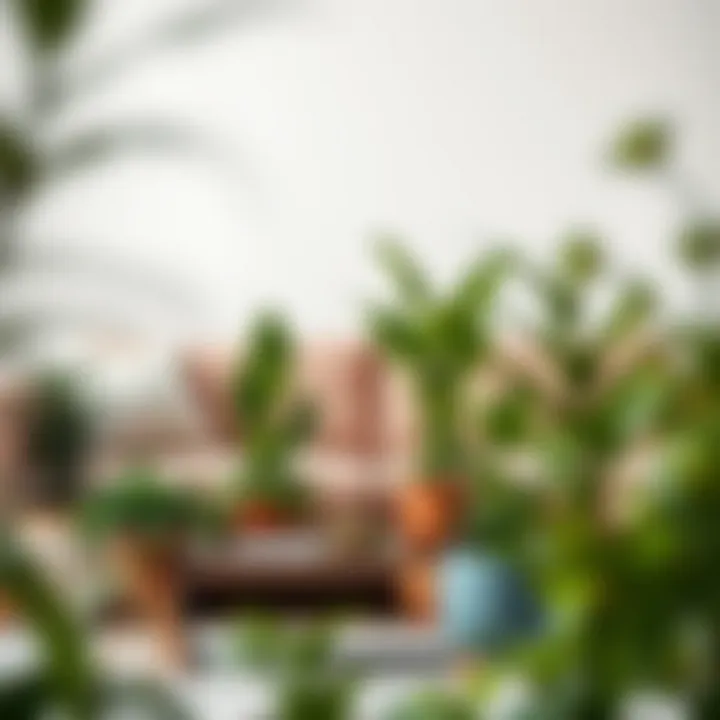
- Durability: Faux plants can last for years, enduring various environmental conditions without wilting or dying. They remain vibrant and do not require water, thus conserving this precious resource.
- Stylistic Versatility: They provide versatility in design; from modern minimalist settings to rustic homes, faux plants seamlessly adapt without the limitations that real plants often present.
- No Allergens: Unlike real plants, faux versions won’t trigger allergies or attract pests, making them suitable for all environments, including spaces where parents or individuals with sensitivities reside.
- Unwavering Aesthetic: They maintain their appearance year-round, offering a constant touch of nature without seasonal limitations. This reliability can be a big plus for those looking for consistency in their decor.
For those seeking to balance style with sustainability, faux plants indeed open a door to creativity while still allowing for environmental sensibility. So, when considering eco-friendly decor, don’t dismiss faux plants; rather, engage critically with their potential to enhance your living space, while making responsible choices.
"Choosing the right faux plants can reflect not only your taste but also your commitment to sustainability and the environment."
As discussions move forward about how we shape responsible spaces, incorporating faux plants thoughtfully will be essential to achieving both beauty and sustainability in our homes.
For further insights on eco-friendly decor and plant choices, you may refer to EPA - Eco-Friendly Living, or explore articles on Sustainable Interior Design and insights on Faux Plants and Their Benefits.
In summary, while concerns about sustainability in faux plants are valid, they present an opportunity for informed choices that can lead to both aesthetic pleasure and environmental awareness.
Consumer Perspectives
Understanding consumer perspectives is essential in dissecting the world of faux plants. It’s about more than mere aesthetics; it’s also about convenience, choice, and a certain lifestyle philosophy. Homeowners, designers, and DIY enthusiasts are making thoughtful decisions when it comes to selecting faux over real, and this section reflects that.
Why Choose Faux Over Real?
Choosing faux plants over their real counterparts offers a bounty of benefits that appeal to modern sensibilities. Here are several compelling reasons:
- Low Maintenance: Faux plants don’t require watering, sunlight, or any intensive care. This factor alone can be a game changer for busy individuals or for those who simply lack a green thumb.
- Allergy-Free Living: Real plants can contribute to allergies or respiratory issues for some individuals. Faux plants keep the aesthetics alive while sidestepping these health concerns altogether.
- Diverse Options: The variety of faux plants available means you can find almost any type of plant or flower imaginable. From exotic Houseplants to seasonal decorations, the options are endless.
- Longevity: Faux plants stand the test of time. Unlike living plants, which may wilt, die, or require re-potting, high-quality faux plants can last for many years with little to no visible wear.
- Design Flexibility: Faux plants allow homeowners to be creative without regard to climate conditions. You can showcase tropical plants in colder regions, have blooms year-round, and arrange your spaces freely.
In short, the choice for faux isn’t just about convenience—it's a lifestyle choice that mirrors personal aesthetics and practical needs.
Market Trends and Consumer Feedback
The market for faux plants has seen an interesting shift in recent years. Consumers are becoming increasingly aware of design possibilities while also considering practical benefits. Some key insights include:
- Sustainability Appeal: As more people prioritize sustainability in their shopping habits, many faux plants are made from eco-friendly materials, appealing to the eco-conscious consumer. This trend resonates strongly with millennials and Gen Z, who are particularly sensitive to environmental issues.
- Incredible Realism: Advances in technology and design have created faux plants that often fool the eye. Shoppers are reporting surprising degrees of satisfaction with the realism of items purchased, breaking the stereotype of tacky or cheap-looking artificial plants.
- Social Media Influence: Platforms like Pinterest and Instagram are full of inspiration for using faux plants in design. Users share their spaces showcasing these pieces, creating a ripple of demand and cultural validation for faux foliage.
- Affordability: With economic pressures rising, faux plants are seen as a budget-friendly decor option. Consumers are finding that they can achieve lush, full looks in their interiors without breaking the bank.
Overall, the feedback from consumers leans favorably towards faux plants, indicating a readiness for embracing these decor elements within the home.
"People love the look of nature but want their homes to be hassle-free and stylish."
For more readings on consumer behavior patterns, check out these resources:
End
The discussion about faux plants culminates in an understanding that they are more than just placeholders in modern décor; they represent a blend of practicality and creativity. The ability to adopt these lifelike alternatives invites a new definition of authenticity in interior design. Homeowners, designers, and DIY enthusiasts alike can find value in the myriad benefits these plants offer—without the chore of care that comes with their live counterparts.
Final Thoughts on the Use of Faux Plants
In a world increasingly concerned with sustainability, faux plants emerge as an appealing choice. Taking up residence in living rooms, kitchens, and even bathrooms, they provide greenery without the worries of wilt or drought. Their longevity and low maintenance cater to the layperson, yet their design intricacies can impress even the most discerning eye.
The aesthetic impact of faux plants cannot be overstated; they brighten spaces, add textures, and contribute color dynamics that a homeowner might seek for ambiance or style. There’s something utterly satisfying about a carefully curated indoor garden, even if every leaf is not real; it’s all about the atmosphere cultivated within a space. Though some purists may debate the authenticity of artificial versus real, the increasing sophistication of faux plants allows them to hold their own in decorative contexts that matter.
"The best plant decoration is the one that fits your lifestyle and suits your aesthetics."
The Future of Faux Plant Design
Looking forward, the future of faux plant design seems bright. Innovations in technology and materials are paving the way for even more lifelike representations. Artists and designers are merging eco-conscious practices with creativity, resulting in options that delight and surprise. Digital printing techniques now allow for incredible detail, making branches appear genuinely dimensional and leaves exhibit real-life characteristics.
As trends shift more toward sustainability, it’s likely that faux plants will incorporate recyclable or eco-friendly materials, appealing further to environmentally conscious consumers. Additionally, the rise in biophilic design—that involves connecting indoor spaces with nature—positions faux plants as an integral aspect of architecture and interior design solutions moving forward.
The blend of practicality with artistry holds the potential to redefine interiors, suggesting that faux plants likely won’t just sit on the sidelines. They will continue to play a prominent role in shaping our spaces into serene, stylish sanctuaries devoid of the demands that come with maintaining actual flora.
In summary, faux plants are here to stay; they speak to our needs for authenticity, aesthetics, and ease��—all wrapped in one appealing package.









